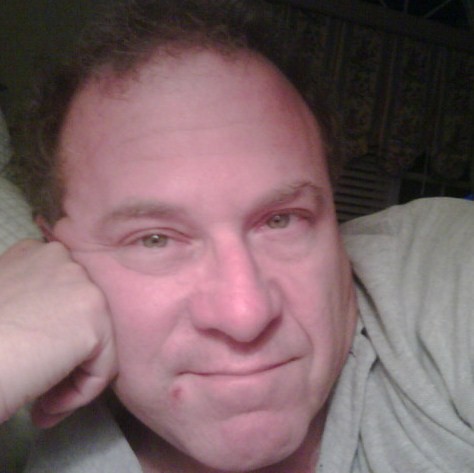Broadcast 10/31/2010 at 7:44 PM EDT (110 Listens, 84 Downloads, 6298 Itunes)
Rob Kall Futurehealth Radio Show Podcast
| Copyright © FutureHealth Administrator, All Rights Reserved. Do not duplicate or post on youtube or other sites without express permission. Creative commons permissions for this site do not apply to audio content or transcripts of audio content. | ||||
Siegfried Othmer Siegfried Othmer
Siegfried Othmer has been active in neurofeedback for more than twenty years, through instrumentation development, clinical research, and the conduct of professional training courses.
- neurofeedback
- bipolar disorder
- synchrony
- mechanisms
Tag(s): Bipolar; Mechanisms;Synchrony Reward And Inhibit Strategies: Recent Advances in Theory and Practice   SKU# AG-W4-064   Futurehealth WinterBrain Workshop by Sue Othmer This workshop will cover (1) the very different roles of rewards and inhibits, and how they relate to normal regulatory rhythms versus abnormal disregulated EEG activity; (2) different clinical options in combining inhibit bands and optimizing reward frequencies with one and two-channel EEG training; (3) the role of bipolar training in desynchronizing EEG activity and stabilizing brain function; and (4) the integration of interhemispheric with single-hemisphere training. (Specifications: MP3, 4 hours) $45.00 (min.)
Tag(s): Bipolar;Interhemispheric;Neurofeedback Neurofeedback with Young Children   SKU# AH-W2-319   Futurehealth WinterBrain Workshop by Sue Othmer. There has been some controversy within the neurofeedback community regarding the possibility of working with children under 6 or 7 years of age. Our clinical experience over the last 20 years is that even very young children are able to effectively engage with and benefit from neurofeedback. (Specifications: MP3, 2 hours) $25.00 (min.)
Tag(s): Brain Injury;Children; Developmental Delay Empathy: A Network Perspective   SKU# AH-P-376   Futurehealth Plenary Talk by Sigfried Othmer. The emergence of altruism, a puzzle to evolutionary biology, can be understood as a natural concomitant of the emergence of empathy. (Specifications: MP3) $7.00 (min.)
Tag(s): Attachment; Morality Morals; Morality Morals EEG Training for Pain Syndromes: Theory & Practice   SKU# AE-W2-007   Futurehealth WinterBrain 2 hour workshop by Sue Othmer. (audio only) With EEG biofeedback we can now, with some pain syndromes, expect to reduce or eliminate the pain. (Specifications: MP3, 2 hours)
- neurofeedback
- Pain
Tag(s): Neurofeedback; Pain;Pain Interhemispheric EEG Training: Discussion and Demonstration   SKU# AF-W4-004   Futurehealth WinterBrain Workshop by Sue Othmer (Specifications: MP3, 4 hours)
- EEG training
- interhemispheric
Tag(s): Demonstrations;Neurofeedback; Training Pain and Neurofeedback   SKU# AF-P-030   Othmer, Sig and Victoria Ibric. Futurehealth Plenary (Specifications: MP3, 20 mins) $7.00 (min.)
Tag(s): Neurofeedback; Pain Neurofeedback for the Bipolar Child   SKU# AF-P-050   Futurehealth WinterBrain Plenary presentation by Sue Othmer. (Specifications: MP3, 20 mins) $7.00 (min.)
Tag(s): Bipolar;Neurofeedback Paradoxes in Neurofeedback and Biofeedback   SKU# AF-P-051   Othmer, Sig and Victoria Ibric. Futurehealth Plenary (Specifications: MP3, 20 mins) $7.00 (min.)
Tag(s): Biofeedback-Neurofeedback Fertile Domain of Targeted Training   SKU# AC-W2-023   Othmer, Sig. Futurehealth Workshop (Specifications: MP3, 2 hours) $25.00 (min.)
Tag(s): Neurofeedback The Role of Targeted Mechanisms Training   SKU# AC-P-071   Othmer, Sig. Futurehealth Plenary (Specifications: MP3, 20 minutes) $7.00 (min.)
Tag(s): Mechanisms; Training Simplicity and Complexity in Neurofeedback   SKU# AG-P-081   Futurehealth WinterBrain Plenary presentation by Sigfried Othmer. Considerable proliferation has occurred in recent years in basic approaches to neurofeedback. Yet there is considerable overlap in terms of efficacy. The attempt is made in this talk to extract the essential elements of commonality among these approaches, and the essential elements that differentiate them. In the manner, it may be possible to discern a minimal set of attributes that neurofeedback strategies should feature in order to yield full coverage of the clinical terrain. (Specifications: MP3, 20 mins) $7.00 (min.)
Tag(s): Cortical Signature;Networks; Phase Training Interhemispheric EEG Training   SKU# AC-W2-024   Futurehealth WinterBrain Workshop by Sue Othmer. Interhemispheric EEG training offers a powerful new approach to stabilizing brain function and improving communication between the hemispheres. Learn the latest techniques for optimizing clinical results through adjustment of reward and inhibit frequencies, and electrode placements to address specific brain functions. (Specifications: MP3, 2 hours) $25.00 (min.)
Tag(s): Eeg;Interhemispheric;Neurofeedback Frontal Lobe EEG Training   SKU# AC-P-072   Futurehealth WinterBrain Plenary presentation by Sue Othmer (Specifications: MP3, 20 minutes) $7.00 (min.)
Tag(s): Eeg; Neurofeedback;Neurofeedback Training Neocortical Dynamics:Brain Timing and State Management   SKU# AA-W2-006   Futurehealth WinterBrain 2 hour presentation by Sigfried Othmer. (Specifications: MP3, 2 hours) $15.00 (min.)
Tag(s): Brain; Neurofeedback Balancing Brain Function   SKU# AA-W2-018   Futurehealth WinterBrain 2 hour presentation by Sue Othmer. (Specifications: MP3, 2 hours) $15.00 (min.)
Tag(s): Balance; Brain Dynamic Vs Static Protocols   SKU# AD-P-02c   Othmer, Sig. Futurehealth Plenary by Sig Othmer (Specifications: MP3, 20 mins) $7.00 (min.)
Tag(s): Protocol Selection So it's all nonlinear dynamics: Now What? Future developments in Neurofeedback  SKU# AD-W2-007   Othmer, Sig. Futurehealth Workshop by Sig Othmer (Specifications: MP3, 2 hours) $25.00 (min.)
Tag(s): Eeg; Neurofeedback;Non-linear Dynamics Theoretical Models Underlying Neurofeedback   SKU# AG-W2-081   Futurehealth Workshop by Sigfried Othmer One of the most striking aspects of neurofeedback is that it addresses such a broad variety of clinical conditions with a very simple set of techniques. What can explain such generality of effects? It is helpful to adopt a network model in which neurofeedback addresses the ?hub? of a regulatory network that is hierarchical in nature, and to which yet other regulatory networks are intimately coupled. A second key aspect is that it addresses the problems of regulation where the most stringent constraints apply. (Specifications: MP3, 2 hours) $25.00 (min.)
Tag(s): Network Theory;Small-world Model;Thalamocortical Dysrhythmia Interhemispheric EEG Training   SKU# AD-W2-006   Futurehealth WinterBrain Workshop by Sue Othmer (Specifications: MP3, 2 hours) $25.00 (min.)
Tag(s): Eeg; Interhemispheric Comparison of Mechanisms-based and QEEG-based NF for Traumatic Brain injury  SKU# AB-P-030   Othmer, Sig. Futurehealth Plenary (Specifications: MP3, 20 minutes) $7.00 (min.)
Tag(s): Mechanisms; QEEG;Trauma What are we Training with EEG Neurofeedback?   SKU# AB-P-042   Othmer, Sig. Futurehealth Plenary (Specifications: MP3, 20 minutes) $7.00 (min.)
Tag(s): Eeg; Neurofeedback EEG Training to Enhance Stability of Brain Function   SKU# AB-P-029   Futurehealth WinterBrain 37 minute plenary presentation. Perhaps the greatest challenge to good brain function is the need to sufficiently inhibit the intrinsic excitability of the central nervous system. (Specifications: MP3, 37 minutes) $7.00 (min.)
Tag(s): Eeg; Neurofeedback;Neurofeedback Training The Self-Regulation Regime: Conceptual and Practical Reunification of Biofeedback and Neurofeedback   SKU# AG-P-193   Futurehealth Plenary Talk Abstract: As a discipline at the forefront of mind-body medicine, applied psychophysiology must address itself to the arbitrary split between feedback on peripheral physiology and on the EEG. It is most likely that changes adopted in the practitioner community to combine the strengths of both approaches will lead toward a theoretical reconceptualization of feedback by any modality as an aspect of a more unitary approach toward improved self-regulation. (Specifications: MP3) $7.00 (min.)
Tag(s): Central Regulation;Network Model; Peripheral Physiology More Effective Neurofeedback with Very High-Arousal Clients: Going Below 0-3 Hz  SKU# AH-P-318   Futurehealth WinterBrain Plenary Talk by Sue Othmer High-arousal neurofeedback clients have continued to challenge us over the years to develop techniques that are sufficiently calming. (Specifications: MP3, 20 mins) $7.00 (min.)
Tag(s):Â Anxiety;Â Autism;Reactive Attachm got started with neurofeedback because they had a child with temporal lobe epilepsy.
IQ rises with neurofeedback-- over 20%-- when these gains are achieved with neurofeedback, they hold.
Found that kids who score lowest have best promise of success with neurofeedback.
If neurofeedback was taught in schools, the IQ curve would shift-- particularly at the lower end
Neurofeedback doesn't just help the logical, verbal IQ-- it also helps the emotional part of the brain.
Low Frequency neurofeedback
In higher frequence neurofeedback, arousal plays major role.
IN lower frequencies... more purely related to control of affect regulation and arousal regulation directly. Training is much more powerful than what we saw before.
Low frequency-- below one tenth of a Hertz. These are the frequencies by which a person organizes their state. Low frequencies reflect the ebb and flow of the level of excitability of neuronal networks. That is the key issue... we're training the brain's improved regulation of neuronal excitability...
What was discovered in the imaging world is that the resting state is a highly active state.
It is the organization of the resting state which determines how we do when that system rouses itself into action.
Comparison with conventional Beta theta training.
Helps more impaired, more challenging cases. .
Subjective experience-- I feel calmer, but I feel more alert.
How is this different from what Val Brown does?
his is inhibit driven.
.1 hz to 10to the minus 4th.
You have received criticism of this approach. What is that criticism and how do you respond to it.
"If someone thinks they understand quantum mechanics, they don't understand quantum mechanics."
Richard Feynman
How is this different from Slow cortical potential neurofeedback as Birbaumer does?
How about qEEG? Can it be done with ultra low frequency?
Quotes Martin Arnes-- qEEG has set back the field of neurofeedback 40 years.
We're looking at issues of state regulation and dysregulation writ large. That's where qEEG is not going to be very helpful.
Once people do this, people will realize that the first clinical target should be arousal regulation...
Many practitioners talk about starting with qEEG? "That's a religion. It's a great marketing thing."
Size: 43,024,332 -- 1 hrs, 29 min, 38 sec









